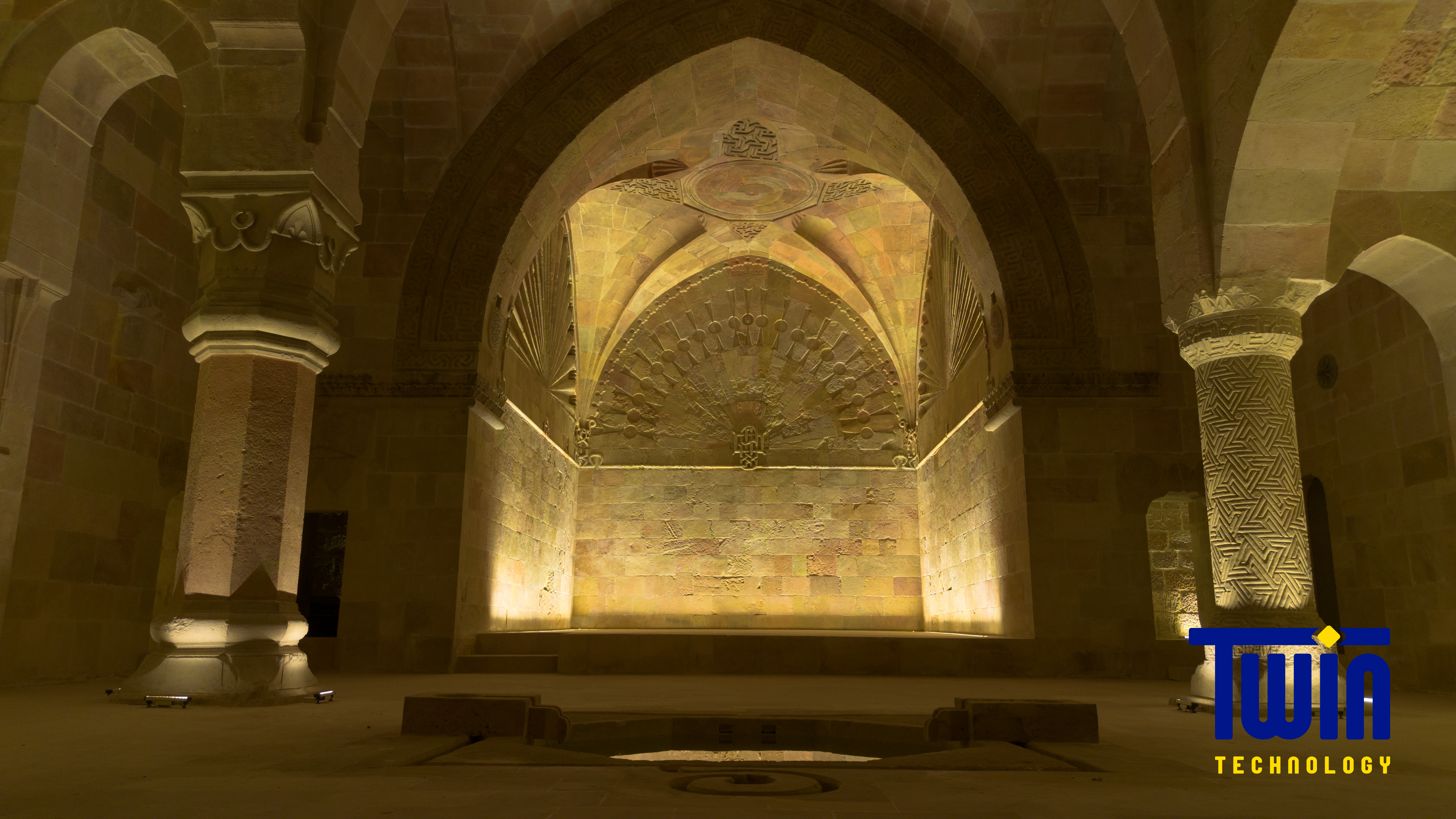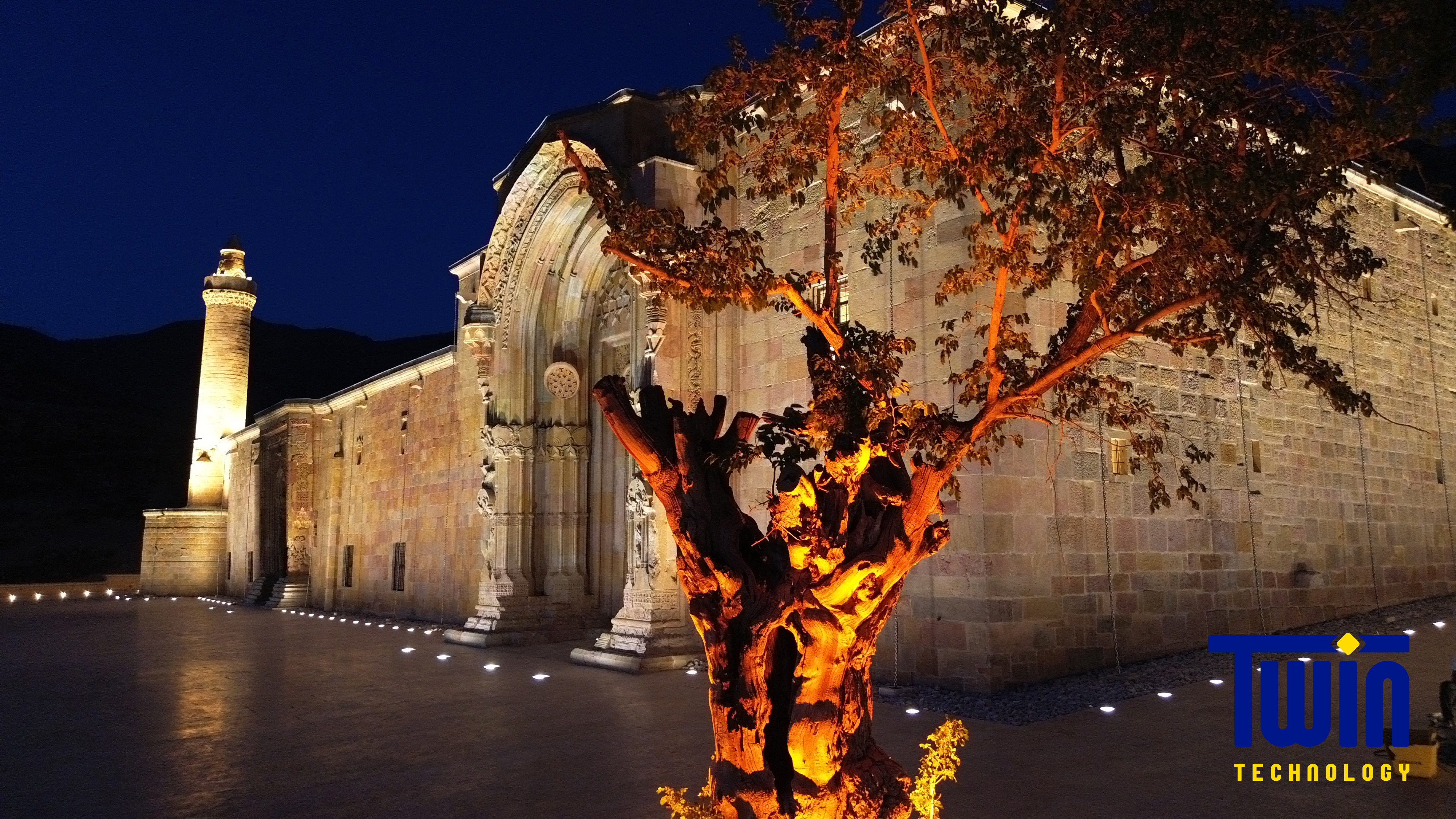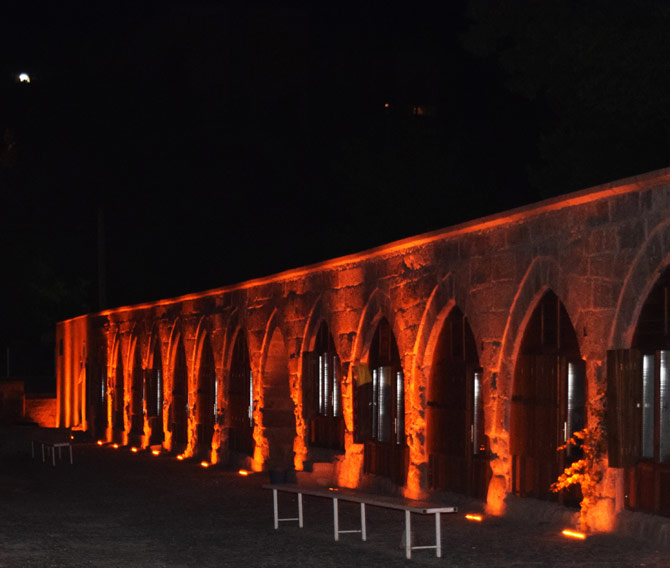
When lighting restored buildings that house valuable artifacts, preservation must be a priority to prevent fading, discoloration, and structural damage. Modern lighting solutions, such as UV-filtered LEDs and controlled light intensity, protect delicate materials while enhancing visibility. Thoughtful design also highlights architectural details like carvings, domes, and calligraphy, maintaining the historical ambiance. In mosques, warm, soft lighting fosters tranquility, while in museums, high-CRI LEDs ensure accurate color rendering without harming artifacts. A balance of natural and artificial light, smart controls, and layered lighting techniques create an immersive, visually engaging environment while safeguarding cultural heritage.

When designing lighting for a restoration building that houses valuable artifacts, preservation must be a top priority. Improper lighting can accelerate the degradation of historical objects by causing fading, discoloration, brittleness, and structural weakening over time. Materials such as textiles, paintings, manuscripts, and other organic artifacts are particularly vulnerable, as prolonged exposure to light—especially ultraviolet (UV) and infrared (IR) radiation—can break down their molecular structures. Additionally, excessive heat from certain light sources can create thermal stress , leading to warping, cracking, or accelerated chemical decay. To ensure the longevity of these artifacts, it is essential to carefully control light intensity, spectrum, duration, and placement , using modern lighting technologies that provide both preservation and aesthetic enhancement.
Lighting plays a crucial role in enhancing the visitor experience in restored buildings such as mosques, museums, and cultural sites. Thoughtfully designed lighting can highlight architectural beauty by emphasizing intricate details like stone carvings, domes, and calligraphy while preserving the historical ambiance. In mosques , soft and warm lighting creates a sense of tranquility, with subtle illumination on key elements like the mihrab and minbar to naturally guide focus. In museums , carefully controlled lighting ensures artifacts are visible without causing damage, using adjustable fixtures and high-quality LEDs for accurate color rendering. Managing natural light is also important, as it can enhance authenticity while protecting delicate materials through UV filtering and smart daylight controls. Additionally, interactive and dynamic lighting can engage visitors, with features like dimmable fixtures for different times of day, motion-sensitive lights for energy efficiency, and discreet floor lighting to improve wayfinding. By blending aesthetics , preservation, and functionality, well-designed lighting transforms restored spaces into immersive and inspiring environments.


Lighting plays a key role in accentuating the beauty of restored buildings such as mosques, museums, and cultural sites. Thoughtful lighting design can highlight intricate architectural details like carvings, mosaics, and calligraphy while preserving the historic character of the space. Soft, concealed lighting in domes and arches can create a warm, inviting glow, while accent lighting can draw attention to important elements without overpowering the surroundings. Layered lighting techniques add depth and contrast, ensuring a balanced and visually engaging atmosphere. In mosques, warm and gentle lighting enhances the sense of tranquility, while in museums, high-quality LEDs bring out the true colors of artifacts. Natural and artificial light should be carefully balanced, using UV filters and smart shading to protect delicate materials while maintaining authenticity. By integrating modern lighting solutions subtly and respectfully, we can enhance the beauty of these historic spaces while preserving their timeless appeal.

When designing lighting for a restoration building that houses valuable artifacts, preservation must be a top priority. Improper lighting can accelerate the degradation of historical objects by causing fading, discoloration, brittleness, and structural weakening over time. Materials such as textiles, paintings, manuscripts, and other organic artifacts are particularly vulnerable, as prolonged exposure to light—especially ultraviolet (UV) and infrared (IR) radiation—can break down their molecular structures. Additionally, excessive heat from certain light sources can create thermal stress , leading to warping, cracking, or accelerated chemical decay. To ensure the longevity of these artifacts, it is essential to carefully control light intensity, spectrum, duration, and placement , using modern lighting technologies that provide both preservation and aesthetic enhancement.

Lighting plays a crucial role in enhancing the visitor experience in restored buildings such as mosques, museums, and cultural sites. Thoughtfully designed lighting can highlight architectural beauty by emphasizing intricate details like stone carvings, domes, and calligraphy while preserving the historical ambiance. In mosques , soft and warm lighting creates a sense of tranquility, with subtle illumination on key elements like the mihrab and minbar to naturally guide focus. In museums , carefully controlled lighting ensures artifacts are visible without causing damage, using adjustable fixtures and high-quality LEDs for accurate color rendering. Managing natural light is also important, as it can enhance authenticity while protecting delicate materials through UV filtering and smart daylight controls. Additionally, interactive and dynamic lighting can engage visitors, with features like dimmable fixtures for different times of day, motion-sensitive lights for energy efficiency, and discreet floor lighting to improve wayfinding. By blending aesthetics , preservation, and functionality, well-designed lighting transforms restored spaces into immersive and inspiring environments.

Lighting plays a key role in accentuating the beauty of restored buildings such as mosques, museums, and cultural sites. Thoughtful lighting design can highlight intricate architectural details like carvings, mosaics, and calligraphy while preserving the historic character of the space. Soft, concealed lighting in domes and arches can create a warm, inviting glow, while accent lighting can draw attention to important elements without overpowering the surroundings. Layered lighting techniques add depth and contrast, ensuring a balanced and visually engaging atmosphere. In mosques, warm and gentle lighting enhances the sense of tranquility, while in museums, high-quality LEDs bring out the true colors of artifacts. Natural and artificial light should be carefully balanced, using UV filters and smart shading to protect delicate materials while maintaining authenticity. By integrating modern lighting solutions subtly and respectfully, we can enhance the beauty of these historic spaces while preserving their timeless appeal.
PROJECT REFERANCES
